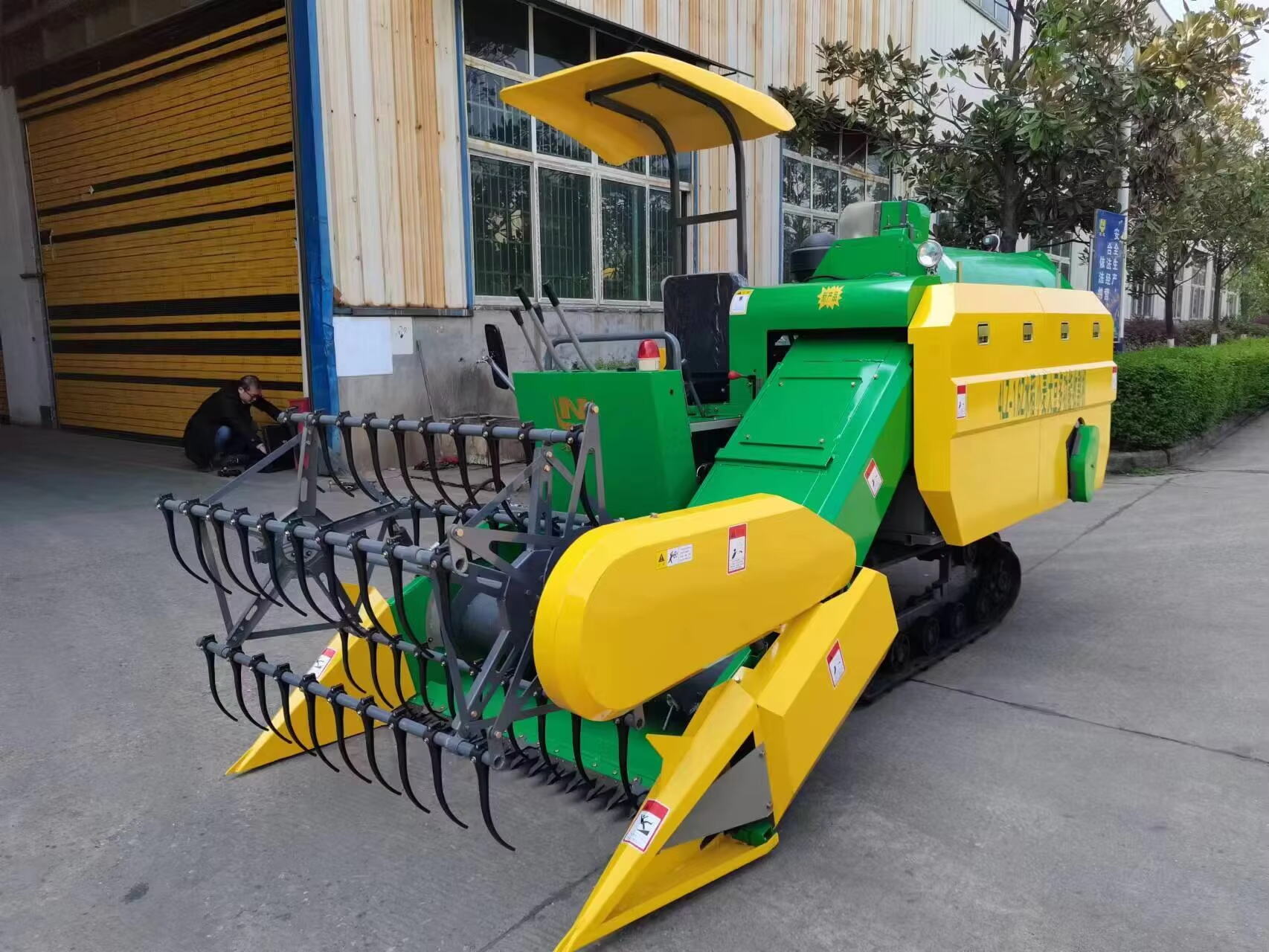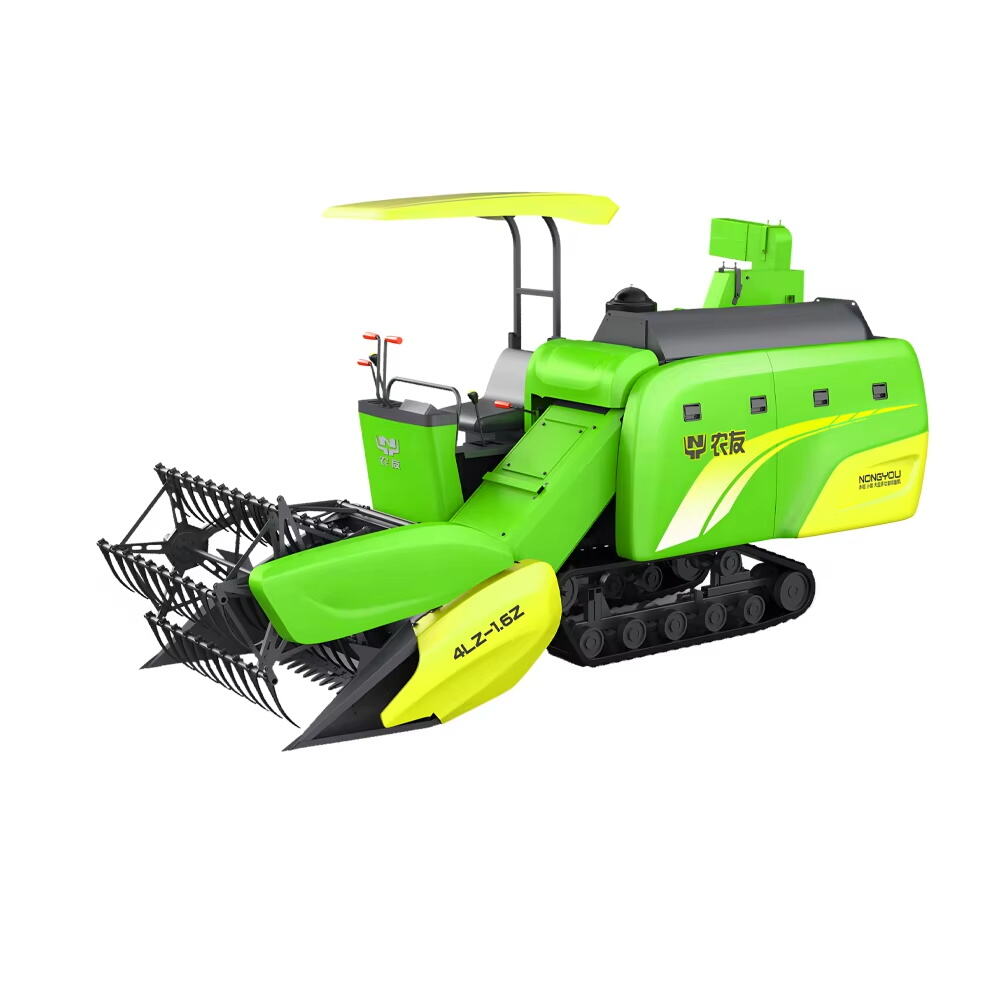Maximizing Agricultural Efficiency with Combine Harvesters
The combine harvester has revolutionized modern agriculture by combining multiple harvesting processes into a single, efficient operation. This machine plays a critical role in increasing productivity while reducing labor and time in crop harvesting. Selecting the right combine harvester is essential for farmers to ensure they get the best performance suited to their land size, crop types, and operational requirements. Understanding the advantages of combine harvesters and the key factors to consider when choosing a model can significantly impact farming success.
Key Advantages of Combine Harvesters
Improved Efficiency and Productivity
Combine harvesters integrate three major functions: reaping, threshing, and winnowing. This combination allows farmers to harvest large areas of crops quickly and with less manual labor. The ability to perform multiple operations simultaneously reduces the time between harvesting and post-harvest processing, improving overall farm productivity.
In addition to saving time, combine harvesters allow for timely harvesting, which is crucial for minimizing crop loss due to weather or pests. The increased speed of harvesting also means crops can be processed at peak quality.
Another advantage is the reduction of grain loss during harvesting. Modern combine harvesters are designed to minimize grain spillage and damage, which directly improves the quantity and quality of the yield. This efficiency translates into higher profits for farmers by preserving more of their crop.
Cost-Effectiveness Over Time
While combine harvesters require a significant upfront investment, their ability to reduce labor costs and increase operational speed makes them cost-effective over time. Using a combine harvester minimizes the need for multiple machines and reduces dependency on seasonal labor, which can be scarce and expensive.
Moreover, modern combine harvesters are designed with fuel efficiency in mind. Advanced engine technologies and optimized power transmission reduce fuel consumption, making the overall harvesting process more economical. Efficient machines also lower maintenance costs due to better design and materials, ensuring that the combine harvester remains operational throughout multiple seasons with fewer repairs.

Essential Features to Consider When Choosing a Combine Harvester
Crop Compatibility and Adaptability
Different crops require different harvesting approaches, and not all combine harvesters are suited to every crop type. It is important to select a combine harvester that can handle the specific crops grown on your farm, whether it is wheat, corn, barley, rice, or soybeans.
Many models come with adjustable settings or interchangeable headers to accommodate various crop types and field conditions. This flexibility ensures that a single machine can be used for multiple crops, increasing its overall value and utility.
Additionally, features like adjustable threshing speed and concave clearance help to customize the harvester’s performance for delicate or tough crops, reducing grain damage and loss.
Capacity and Size Relative to Farm Scale
The size of the combine harvester and its grain tank capacity should match the scale of your farming operations. Larger farms benefit from high-capacity machines that can cover more acreage in less time, while smaller farms may prioritize maneuverability and ease of use.
Selecting the appropriate size helps optimize fuel consumption and reduces wear on the machine by avoiding overuse or underuse. It also affects transport and storage logistics, as larger machines may require special permits or storage facilities.
Farmers should also consider the terrain of their land, as larger combine harvesters might struggle in uneven or hilly fields, whereas smaller models offer greater agility in such conditions.
Technology and Performance Enhancements
Precision Farming Integration
Modern combine harvesters often include technology compatible with precision agriculture systems. Features such as GPS mapping, yield monitoring, and automated steering improve harvesting accuracy and efficiency.
Integrating technology with your combine harvester enables better crop management and data-driven decisions, ultimately enhancing productivity and sustainability. Data collected during harvesting can inform future planting and fertilization strategies, leading to higher yields and more efficient use of resources.
Many machines also offer real-time diagnostics, allowing operators to monitor engine performance, fuel consumption, and wear components, reducing the likelihood of breakdowns during critical periods.
Engine Power and Fuel Efficiency
The engine power of a combine harvester affects its ability to handle tough field conditions and high crop volumes. At the same time, fuel efficiency remains a critical factor to reduce operating costs.
Selecting a model with the right balance of power and efficiency ensures consistent performance without excessive fuel consumption, especially during long harvest seasons. Some combine harvesters come with hybrid or electric options, further enhancing energy savings and reducing emissions.
Proper power management systems optimize engine load and adjust performance dynamically, ensuring that the machine uses only the energy necessary for the current task.
Maintenance and Support Considerations
Ease of Maintenance and Service Access
Regular maintenance is vital to keep combine harvesters running smoothly and to extend their lifespan. Choosing models with accessible service points and straightforward maintenance procedures saves time and reduces downtime during critical harvesting periods.
Availability of spare parts and the reputation of manufacturer support also play a role in minimizing service disruptions. Machines designed with modular components make repairs faster and less costly.
Preventive maintenance schedules and onboard alerts help operators stay ahead of potential issues, avoiding costly breakdowns during peak use.
Durability and Build Quality
Durability is especially important for combine harvesters used in rough terrain or challenging weather conditions. Machines built with high-quality materials and components offer better resistance to wear and tear.
Prioritizing durable construction reduces repair frequency and ensures reliable performance through multiple harvest seasons. Features such as reinforced frames, corrosion-resistant coatings, and heavy-duty bearings enhance machine longevity.
Investing in a well-built combine harvester ensures a better return on investment and reduces long-term operational headaches.
Operator Comfort and Safety Features
Cabin Design and Ergonomics
Operator comfort impacts productivity during long hours in the field. Modern combine harvesters feature spacious cabins with ergonomic controls, adjustable seats, and climate control systems to reduce fatigue.
Good visibility from the cabin also improves safety and allows operators to work with greater precision. Noise reduction technologies and vibration dampening further enhance operator comfort, reducing physical strain.
User-friendly interfaces with touchscreen controls and customizable settings allow operators to tailor machine behavior to their preferences.
Safety Mechanisms
Safety features such as emergency stop buttons, rollover protection, and advanced braking systems protect operators during operation. Choosing combine harvesters with comprehensive safety features helps meet regulatory standards and reduces the risk of accidents.
Some machines also come with cameras and sensors to improve awareness around blind spots, protecting both the operator and bystanders.
Automatic shut-off systems engage when unsafe conditions are detected, providing an additional layer of security.
Final Recommendations for Selecting a Combine Harvester
Evaluating Your Farm’s Specific Needs
Before making a purchase, thoroughly evaluate your farm’s crop types, acreage, terrain, and harvesting timeline. These factors determine the specifications and features that are most important in a combine harvester.
Matching your needs with a well-suited model ensures better returns on investment and improved harvesting outcomes. Consulting with experts or experienced operators can provide valuable insights to guide your decision.
Budget Planning and Long-Term Value
Consider both the initial cost and the total cost of ownership, including maintenance, fuel, and potential resale value. Investing in a high-quality combine harvester can offer long-term savings and enhanced efficiency.
Balancing budget constraints with performance needs is key to choosing the right machine for your agricultural operations. Leasing options or financing may provide flexible ways to access advanced machinery without large upfront payments.
FAQ
What are the primary benefits of using a combine harvester?
Combine harvesters streamline the harvesting process by combining reaping, threshing, and winnowing, which saves time, reduces labor costs, and increases overall productivity.
How do I choose a combine harvester suited for my crops?
Look for models with adjustable settings and compatible headers that can handle the specific crops you grow. Considering crop type versatility is important for maximizing machine usage.
What maintenance practices are necessary for combine harvesters?
Regular lubrication, cleaning, inspection of wear parts, and timely replacement of filters and belts are essential to ensure reliable operation.
How important is operator comfort in a combine harvester?
High operator comfort improves productivity and reduces fatigue during long working hours. Features like ergonomic cabins, adjustable seating, and climate control contribute significantly to operator well-being.
Table of Contents
- Maximizing Agricultural Efficiency with Combine Harvesters
- Key Advantages of Combine Harvesters
- Essential Features to Consider When Choosing a Combine Harvester
- Technology and Performance Enhancements
- Maintenance and Support Considerations
- Operator Comfort and Safety Features
- Final Recommendations for Selecting a Combine Harvester
- FAQ

